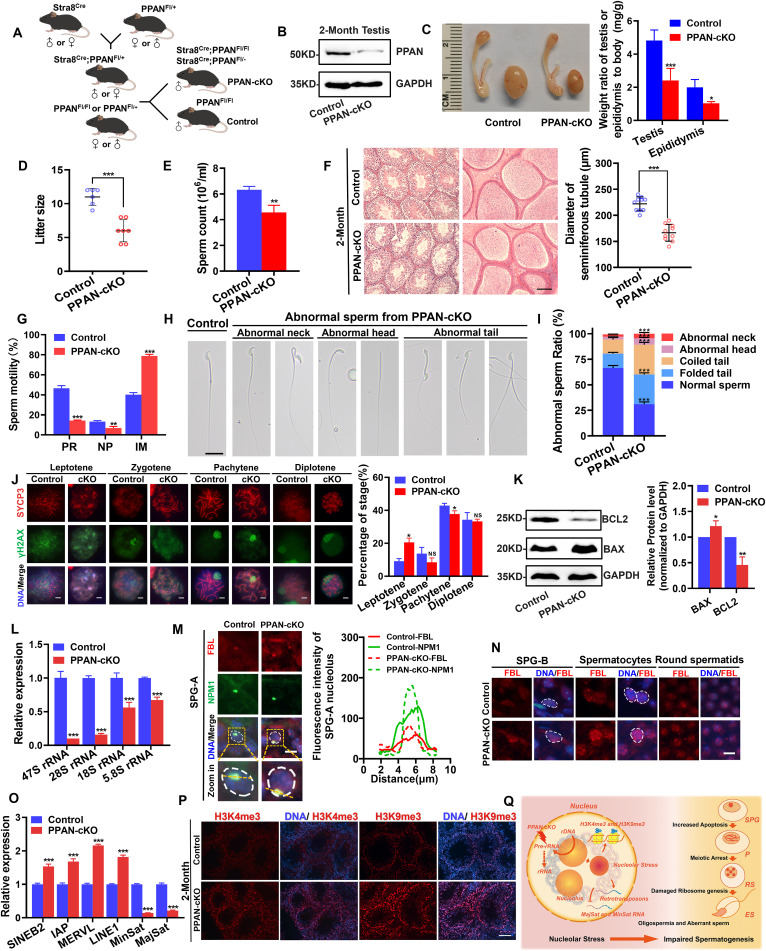
PPAN modulates mouse male germ cell development via maintaining nucleolar homeostasis


In mammalian cells, the nucleolus serves as a factory for organizing ribosomal RNA (rRNA) synthesis and ribosomal biogenesis. Moreover, by interacting with rRNA genes and heterochromatin, nucleolus also functions in chromatin organization and reprogramming. Differing from somatic cells, nucleolus undergoes distinct morphological changes during oocyte and early embryo development, while playing an indispensable role in orchestrating chromatin remodeling.1 However, the structural change and function of nucleolus in male germ cell development are still waiting for exploration. We recently reported that the role of Peter Pan Homolog (PPAN), a key rRNA processing factor, in mouse oocyte and preimplantation development.2 Here, we further constructed a male germ cell-conditional PPAN knockout (PPAN-cKO) mouse model to disturb nucleolar function in spermatogenesis. Our data showed that depletion of PPAN severely disrupts germ cell development by inducing aberrant nucleolar structure and function, resulting in an oligoasthenoteratozoospermia phenotype in mice.
